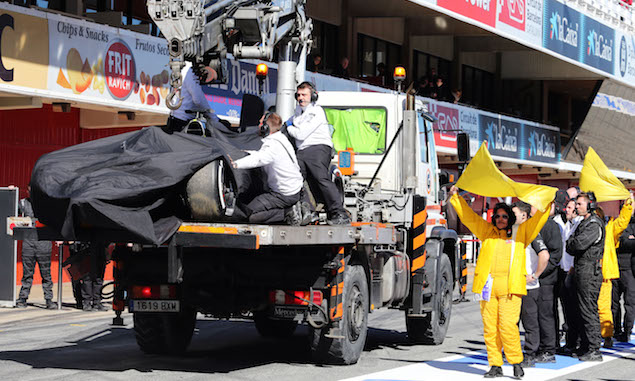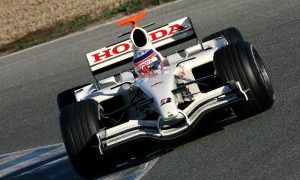
McLaren says the crash which injured Fernando Alonso was caused by "unpredictably gusty winds" on Sunday.
Alonso hit the wall on the inside of the track between turns 3 and 4 at the Circuit de Catalunya, having to be treated at the circuit's medical centre before being airlifted to hospital for further checks. With Alonso recovering in hospital, McLaren has released its initial findings in to what caused the incident and says the weather conditions played a significant part.
"His car ran wide at the entry to Turn Three – which is a fast uphill right-hander – allowing it to run onto the Astroturf that lines the outside of the track. A consequent loss of traction caused a degree of instability, spitting it back towards the inside of the circuit, where it regained traction and struck the wall side-on.
"Our findings indicate that the accident was caused by the unpredictably gusty winds at that part of the circuit at that time, and which had affected other drivers similarly (eg, Carlos Sainz Jnr).
"We can categorically state that there is no evidence that indicates that Fernando’s car suffered mechanical failure of any kind. We can also confirm that absolutely no loss of aerodynamic pressure was recorded, which fact indicates that the car did not suffer any aerodynamic loss, despite the fact that it was subjected to a significant level of g-force. Finally, we can also disclose that no electrical discharge or irregularity of any kind occurred in the car’s ERS system, either before, during or after the incident.
"That last point refutes the erroneous rumours that have spread recently to the effect that Fernando was rendered unconscious by an electrical fault. That is simply not true. Our data clearly shows that he was downshifting while applying full brake pressure right up to the moment of the first impact – something that clearly would not have been possible had he been unconscious at the time.
"Our data also confirms that Fernando’s car struck the inside concrete wall, first with its front-right wheel and then with its rear-right. It was a significant lateral impact, resulting in damage to the front upright and axle.
"After the initial impact, the car slid down the wall for about 15 seconds before coming to a halt. All four wheels remained attached to the car, but no damage was sustained by the bodywork or crash structure between the front and rear wheels."
Click here for the gallery from day four of the second test
Keep up to date with all the F1 news via Facebook and Twitter






